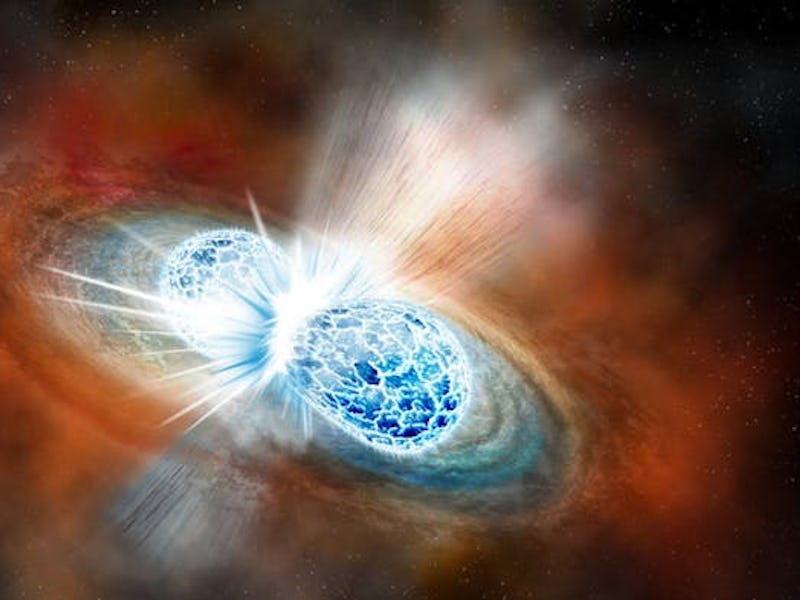On Monday, an international team of scientists announced the first-ever detection of a gravitational wave from a smashup of neutron stars. While the discovery of this never-before-detected kind of gravitational wave is already an incredible feat, physicists tell Inverse it gets even better — collisions of neutron stars could have filled Earth with the heavy metals we know and love.
Gravitational waves, first predicted in Einstein’s theory of general relativity, are ripples in the fabric of space-time. Though gravitational wave detectors have previously found these cosmic chills coming from black hole mergers, this most recent discovery marks the first detection of such waves from a collision of neutron stars. Neutron star smashups are particularly interesting because among other things, these incredibly dense, dead stars create the perfect breeding ground for forming heavy metals like gold, platinum, and uranium.
“In particular you need to create a cloud of hot debris which is rich in neutrons,” Daniel Kasen, an associate professor of physics and astronomy at the University of California, Berkeley, tells Inverse. “The neutrons bombard the atomic nuclei and stick to them, building heavier and heavier elements up the periodic table.”
When neutron stars collide, the result is called a kilonova — itself an extremely metal name for a cosmic phenomenon. The kilonova creates a “cloud of matter rich in neutrons” that expands outwards, Kasen explains.
“At some point, one or more of those neutron star mergers must have happened relatively nearby our solar system, seeding heavy metals into the gas that would ultimately condense into the sun and earth,” he says.
The researchers involved in the detection of this gravitational wave posit that neutron star collisions occur around once every 10,000 years within the Milky Way, so while they’re not terribly common, they’re not exactly rare. This most recent discovery opens up new opportunities for scientists to explore fundamental questions about our universe — and figure out where all our gold came from, while they’re at it.
“The origin of the heaviest elements has been one of the long standing mysterious of astrophysics,” Kasen says. “While we had known that elements as heavy as iron can fused in the cores of stars, the formation of elements heavier than iron requires very special and explosive conditions.”
It doesn’t get much more metal than a hot cloud of chaos creating gold, folks. The universe is just badass like that.
If you liked this article, check out this video on what would happen if an asteroid hit the middle of the ocean.
